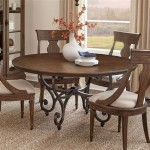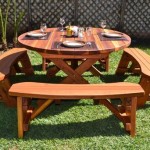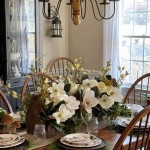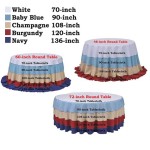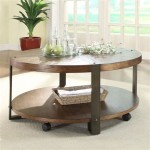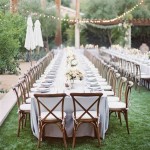Who Sits At The Top Table At A Wedding: A Comprehensive Guide
The top table, also frequently referred to as the head table, is a focal point at a wedding reception. It is where the wedding party, and often immediate family members, are seated during the wedding breakfast or dinner. The arrangement and composition of this table is a matter often requiring careful consideration, as it reflects the couple's relationships and wishes regarding their nearest and dearest's roles in the celebration.
The allocation of seats at the top table carries symbolic weight, subtly communicating respect, gratitude, and familial bonds. Understanding the traditional guidelines and the potential for personalized adaptations is crucial for creating a seating arrangement that honors those closest to the couple and contributes to a harmonious atmosphere throughout the reception.
Variations in cultural norms, specific family dynamics, and the size of the wedding party all influence the final configuration. What works perfectly for one couple might be entirely unsuitable for another. Therefore, the decision-making process should be approached with sensitivity and a willingness to prioritize the overall well-being and enjoyment of all attendees, particularly those seated at the top table.
Traditional Top Table Arrangements
The most common arrangement adheres to a specific hierarchy. The bride and groom occupy the central positions, symbolizing their union. Typically, the bride sits to the groom's left. Traditionally, to the bride's left sits her father, who often gave her away, and then the mother of the groom. To the groom's right sits the bride's mother, followed by the groom's father. This arrangement subtly acknowledges the parents' contributions to the marriage and places them in positions of honor.
The best man and maid of honor are also integral members of the top table. The best man traditionally sits to the groom's right (after the groom's mother) and the maid of honor sits to the bride's left (after the bride's father). These individuals have played significant roles in the wedding planning and execution, and their inclusion at the top table reflects their importance in the couple's lives.
Bridesmaids and groomsmen may also be seated at the top table, particularly if the wedding party is relatively small. Alternatively, they might be seated at adjacent tables, ensuring they are still closely connected to the main group. The decision often hinges on the overall number of guests and the couple's desire to keep the top table manageable. The traditional arrangement prioritizes the parents of the bride and groom and the best man and maid of honor.
This standard formation aims to balance the representation of both sides of the family and acknowledges the significant contributions of the best man and maid of honor. However, deviations from this traditional structure are becoming increasingly common, reflecting the evolving dynamics of modern families and wedding practices.
Modern Deviations and Alternative Configurations
Modern weddings are often marked by a willingness to deviate from established conventions, and the top table is no exception. A significant shift is the inclusion of stepparents, especially when they have played a significant role in the couple's lives. In such cases, finding a way to honor both sets of parents, without causing offense, requires careful consideration and open communication.
One common solution is to seat stepparents alongside biological parents, creating a more inclusive representation of the family structure. Alternatively, stepparents might be seated at tables close to the top table, ensuring they feel involved and valued. The key is to be transparent about the seating arrangements and to explain the rationale behind the decisions to all parties involved.
Another modern adaptation involves couples choosing to forgo the traditional top table altogether. This decision can be driven by a desire for a more relaxed and informal atmosphere, or it might be a practical solution for dealing with complex family dynamics. Instead of a designated top table, the couple might opt to sit with a group of friends, scatter immediate family among other tables, or even have a "sweetheart table" for just the two of them.
The "sweetheart table" provides a more intimate setting for the couple to connect and enjoy each other's company amidst the whirlwind of the reception. This arrangement also allows the couple to mingle more freely with their guests, as they are unconstrained by the formal structure of a traditional top table. In some cases, couples may opt to rotate guests at the sweetheart table throughout the reception to spend quality time with more of their loved ones.
The most important factor in any adapted arrangement is ensuring that the couple's decisions are respectful and considerate of all those involved. Open communication and a willingness to compromise are essential for navigating potentially sensitive situations and creating a seating arrangement that reflects the couple's values and priorities.
Factors Influencing Top Table Decisions
Several key factors often influence the decisions surrounding the top table arrangements. The size of the wedding party is a primary consideration. A larger wedding party might necessitate a longer table or require the inclusion of some members at nearby tables. Conversely, a smaller wedding party might make a traditional top table feel unnecessarily sparse, leading to alternative arrangements.
Family dynamics also play a significant role. Divorced parents, stepparents, and complex family relationships can all complicate the seating arrangements. The couple must navigate these dynamics with sensitivity and strive to create a seating plan that minimizes potential conflict and promotes a harmonious atmosphere. Open communication with family members is crucial for understanding their expectations and addressing any concerns they might have.
Cultural traditions can also influence the top table arrangements. Some cultures have specific customs regarding who should be seated at the head table and the order in which they should be placed. It is important for the couple to be aware of these traditions and to decide whether they wish to adhere to them or adapt them to suit their personal preferences.
The venue layout can also be a decisive factor. The size and shape of the reception space might dictate the placement of the top table and the number of people who can comfortably be seated there. The acoustics of the room should also be considered, ensuring that those seated at the top table can easily hear the speeches and other announcements.
Ultimately, the couple's preferences are the most important guiding principle. The top table should reflect their values, their relationships, and their vision for the wedding day. While it is important to be mindful of traditional etiquette and family expectations, the final decision should be one that makes the couple feel comfortable and happy.
Communicating the seating plan clearly to all guests, either through seating charts, place cards, or verbal announcements, is essential for ensuring a smooth and organized reception. Clear and concise communication minimizes confusion and helps guests feel welcomed and informed.
The configuration of the top table, therefore, is not a rigid template, but a flexible framework that couples can adapt to meet their unique circumstances. Careful planning, open communication, and a willingness to prioritize the well-being of all involved parties are crucial for creating a seating arrangement that contributes to a memorable and joyous wedding celebration.

Arranging Your Wedding Seating Plan And Top Table

Wedding Etiquette Who Sits At The Bridal Table

Wedding Top Table Seating Arrangements My Scotland

The Wedding Top Table Layout

Who Sits At The Top Table Charlotte Elizabeth Photography

How To Seat The Bridal Table At Your Reception With Graphs Queensland Brides

Wedding Top Table Layout Guide The Brewery

Wedding Top Table Seating Arrangements Aby Joanne Photography

Wedding Top Table Seating Arrangements Aby Joanne Photography

How Do I Seat The Top Table At My Wedding Weddings By Mary
Related Posts

